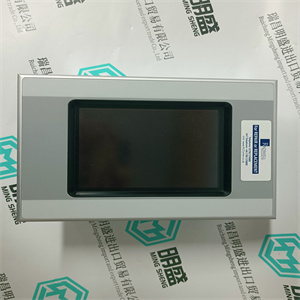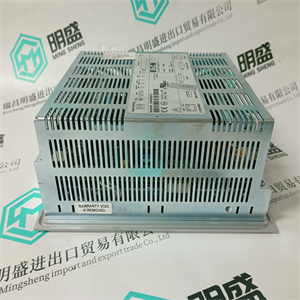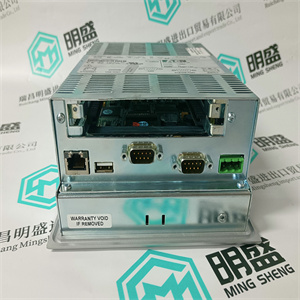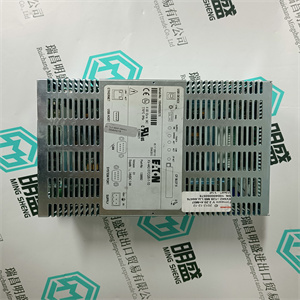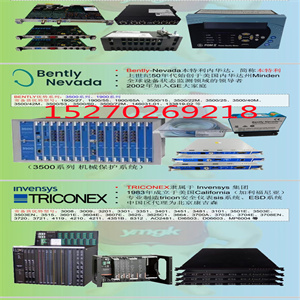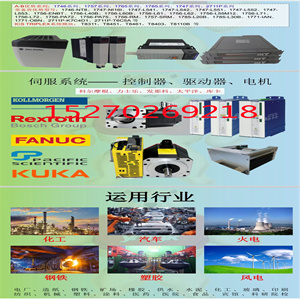140CRP93100 RIO 处理器接口S908 Head单电缆 Schneider网络可以利用不同的混合链路实现,如Fast
以太网和PPP。它提供完全冗余,以实现高网络
可利用性
AC 800M控制器始终通过STP连接到控制网络
(屏蔽双绞线)电缆。当地环境是否应为工业环境
本质上,AC 800M/控制网络连接必须转换为
光纤(FO)电缆。这是通过安装以太网交换机来实现的,该交换机具有:
光端口和电端口。参见161页图58。
有关控制网络的更多信息,请参阅控制网络文档。
通信可能性
处理器单元(PM8XX/TP830或PM891)包含以下内容:
通信端口,提供以下功能:
•CN1和CN2用于连接控制网络。都是RJ45
以太网端口(IEEE802.3)和连接通常使用
5类屏蔽双绞线(STP 5级)。然而,正如所提到的
以前,在工业环境中,建议所有STP
电缆转换为光纤。
–对于单CPU或冗余CPU和单网络:所有CN1端口均为
连接到网络(可以使用CN2,但需要重新配置
有关CPU的通信设置)。
–对于单CPU或冗余CPU和冗余网络:所有CN1端口均为
连接到主网络,所有CN2端口连接到辅助网络
网络
附录C中提供了电缆选择、开关等的详细信息,
推荐组件。
PM851/PM851A仅限于一个以太网(CN1)端口,因此是冗余的
以太网不可用。
3节配置通信可能性
3BSE036351-600 A 163
•COM3是带有调制解调器信号的RS-232C的RJ45端口。例子
协议为Modbus、西门子3964R、COMLI或定制设计。更多
有关详细信息,请参阅协议特定文档。
•COM4是用于连接维修工具的RJ45端口(参见连接控制
160页的构建器)。端口没有调制解调器信号。
通过向CEX总线添加通信接口
处理器单元端口可以扩展。可用的CEX总线接口数量
如164页表18所示。
COM3端口不适用于PM891。
通信可能性3节配置
164 3BSE036351-600 A
表18.CEX总线上可用的接口
界面
上的接口数
CEX总线号
每个端口
界面
大
每个
界面
大限度
总计
CEX总线(1)(2)
(1) PM851/PM851A限制为多一个CEX模块。
(2) CEX总线上的大总限制是电气限制,由于以下原因,可能存在进一步的限制:
为特定单元执行。
CI853(RS-232C)12
12
2.
CI854/CI854A/CI854B
(现场总线DP)
12 2
CI855
(主总线300的以太网)
12 2
CI856(S100)12 1
CI857(INSUM)6 1
CI858(驱动总线)2 3
CI860(基金会现场总线HSE)12 1
CI862(三人组)4 1
CI865(卫星输入/输出)4 1
CI867(Modbus TCP)12 2
CI868(IEC 61850)12 1(3)
(3) 在接口CI868、CI871和CI873中仅使用一个端口(CH1)。
CI869(AF100)12 2
CI871(PROFINET IO)12 2(3)
CI872(MOD5)4 8 3
CI873(以太网/IP)4 12 2(3)
3节配置控制器IP地址
3BSE036351-600 A 165
有关CI853接口可用串行协议的信息,请参阅COM3
在上面
控制器IP地址
单CPU配置
控制器上CN1端口的IP地址使用IPConfig工具设置(此
工具与800xA系统一起安装)。请参阅IPConfig联机帮助。
如果使用网络冗余,请确保CN1端口连接到
并且CN2端口连接到辅助网络。在这个
在这种情况下,您还必须为CN2端口设置IP地址。请参阅IPConfig联机帮助。
冗余CPU配置
在具有冗余CPU的配置中,IP地址必须设置如下:
1.关闭备用CPU(电源关闭)。
2.将IPConfig工具连接到主CPU,并设置
主CPU上的CN1端口。请参阅IPConfig联机帮助。
如果冗余控制器(PM8XX)与冗余通信一起使用
接口,确保完全冗余并支持在线升级
固件。
建议采用以下方式启动IPConfig会话:
在分配预期IP地址之前,执行“恢复出厂设置”命令。
这将删除以前存储的备用MAC和IP地址(如果有)。看见
53页冗余配置中的MAC和IP地址处理。
140CRP93100 RIO 处理器接口S908 Head单电缆 Schneider
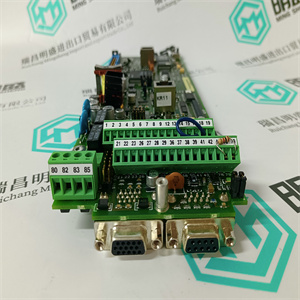 140CRP93100 RIO 处理器接口S908 Head单电缆 Schneider
The network can utilize different and mixed link implementations such as Fast
Ethernet and PPP. It provides for full redundancy, in order to achieve high network
availability.
The AC 800M controller is always connected to the Control Network via an STP
(Shielded Twisted Pair) cable. Should the local environment be of an industrial
nature, the AC 800M / Control Network connection must be converted over to a
Fiber Optic (FO) cable. This is achieved by installing an Ethernet Switch having
both optical and electrical ports. See Figure 58 on page 161.
For more information on Control Network, see Control Network documentation.
Communication Possibilities
The processor unit (PM8XX/TP830 or PM891) contains the following
communication ports, offering the following functions:
• CN1 and CN2 are used for connection to the Control Network. Both are RJ45
ports for Ethernet (IEEE802.3) and connection is normally achieved using
category 5 shielded twisted pair cable (STP class 5). However, as mentioned
previously, within industrial environments it is recommended that all STP
cables are converted to optical fiber.
– For single or redundant CPUs and single networks: All CN1 ports are
connected to the network (CN2 can be used, but requires reconfiguration
of the communication set-up for the concerned CPU).
– For single or redundant CPUs and redundant networks: All CN1 ports are
connected to the primary network and all CN2 ports to the secondary
network.
Details on cable selection, switches and so forth, are provided in Appendix C,
Recommended Components.
PM851/PM851A is restricted to one Ethernet (CN1) port, thus redundant
Ethernet is not available.
Section 3 Configuration Communication Possibilities
3BSE036351-600 A 163
• COM3 is an RJ45 port for RS-232C with modem signals. Examples of
protocols are Modbus, Siemens 3964R, COMLI or custom-design. For more
details, see protocol-specific documentation.
• COM4 is an RJ45 port for connection of service tools (see Connecting Control
Builder on page 160). The port has no modem signals.
By adding communication interfaces to the CEX-Bus, the number of protocols and
processor unit ports can be expanded. The available CEX-Bus interface quantities
are shown in Table 18 on page 164.
COM3 port is not available for PM891.
Communication Possibilities Section 3 Configuration
164 3BSE036351-600 A
Table 18. Interfaces Available on the CEX-Bus
Interface
Number of Interfaces on
CEX-Bus Number of
ports per
Interface
Maximum of
each
interface
Maximum
total on
CEX-Bus(1)(2)
(1) PM851/PM851A is restricted to a maximum of one CEX module.
(2) The maximum total limit on CEX-Bus is the electrical one, there might be further limitations due
to performance for a particular unit.
CI853 (RS-232C) 12
12
2
CI854/CI854A/CI854B
(PROFIBUS DP)
12 2
CI855
(Ethernet for MasterBus 300)
12 2
CI856 (S100) 12 1
CI857 (INSUM) 6 1
CI858 (DriveBus) 2 3
CI860 (FOUNDATION Fieldbus HSE) 12 1
CI862 (TRIO) 4 1
CI865 (Satt I/O) 4 1
CI867 (Modbus TCP) 12 2
CI868 (IEC 61850) 12 1(3)
(3) Only one port (CH1) is used in the interfaces CI868, CI871 and CI873.
CI869 (AF100) 12 2
CI871 (PROFINET IO) 12 2(3)
CI872 (MOD5) 4 8 3
CI873 (EtherNet/IP) 4 12 2(3)
Section 3 Configuration Controller IP Addresses
3BSE036351-600 A 165
For information on available serial protocols for the CI853 interface, see COM3
above.
Controller IP Addresses
Single CPU Configurations
The IP address of the CN1 port 140CRP93100 RIO 处理器接口S908 Head单电缆 Schneider
| 140CRP93100 RIO 处理器接口S908 Head单电缆 Schneider | | | | |

